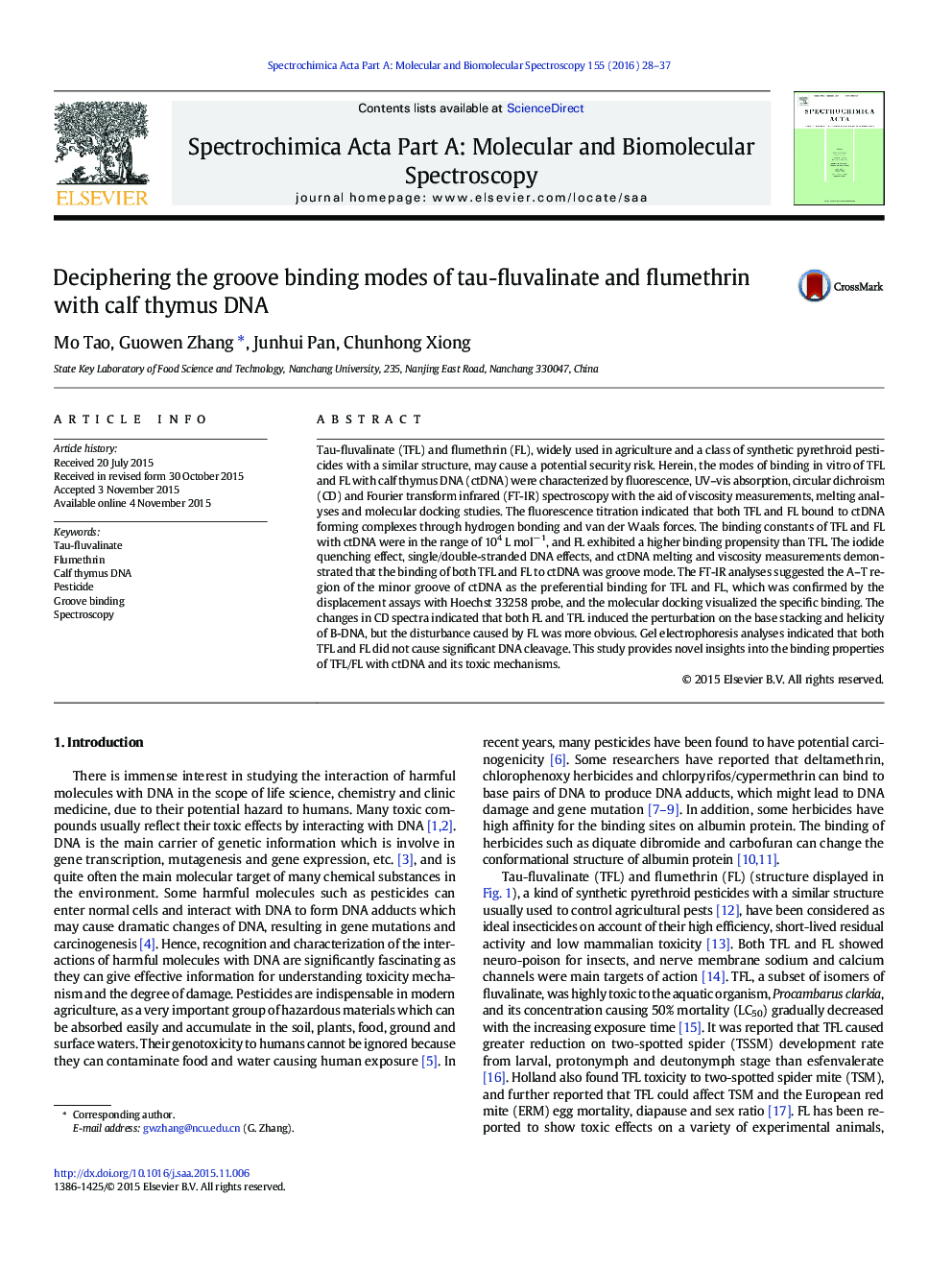| Article ID | Journal | Published Year | Pages | File Type |
|---|---|---|---|---|
| 1231565 | Spectrochimica Acta Part A: Molecular and Biomolecular Spectroscopy | 2016 | 10 Pages |
•DNA interaction is studied by spectroscopic methods and molecular docking.•The binding mode of TFL or FL to ctDNA is minor groove binding.•Both TFL and FL prefer to bind with A–T rich regions of ctDNA.•Molecular simulation confirms the binding mode and site of TFL or FL with ctDNA.•Both TFL and FL do not cause significant DNA cleavage.
Tau-fluvalinate (TFL) and flumethrin (FL), widely used in agriculture and a class of synthetic pyrethroid pesticides with a similar structure, may cause a potential security risk. Herein, the modes of binding in vitro of TFL and FL with calf thymus DNA (ctDNA) were characterized by fluorescence, UV–vis absorption, circular dichroism (CD) and Fourier transform infrared (FT-IR) spectroscopy with the aid of viscosity measurements, melting analyses and molecular docking studies. The fluorescence titration indicated that both TFL and FL bound to ctDNA forming complexes through hydrogen bonding and van der Waals forces. The binding constants of TFL and FL with ctDNA were in the range of 104 L mol− 1, and FL exhibited a higher binding propensity than TFL. The iodide quenching effect, single/double-stranded DNA effects, and ctDNA melting and viscosity measurements demonstrated that the binding of both TFL and FL to ctDNA was groove mode. The FT-IR analyses suggested the A–T region of the minor groove of ctDNA as the preferential binding for TFL and FL, which was confirmed by the displacement assays with Hoechst 33258 probe, and the molecular docking visualized the specific binding. The changes in CD spectra indicated that both FL and TFL induced the perturbation on the base stacking and helicity of B-DNA, but the disturbance caused by FL was more obvious. Gel electrophoresis analyses indicated that both TFL and FL did not cause significant DNA cleavage. This study provides novel insights into the binding properties of TFL/FL with ctDNA and its toxic mechanisms.
Graphical abstractFigure optionsDownload full-size imageDownload as PowerPoint slide
